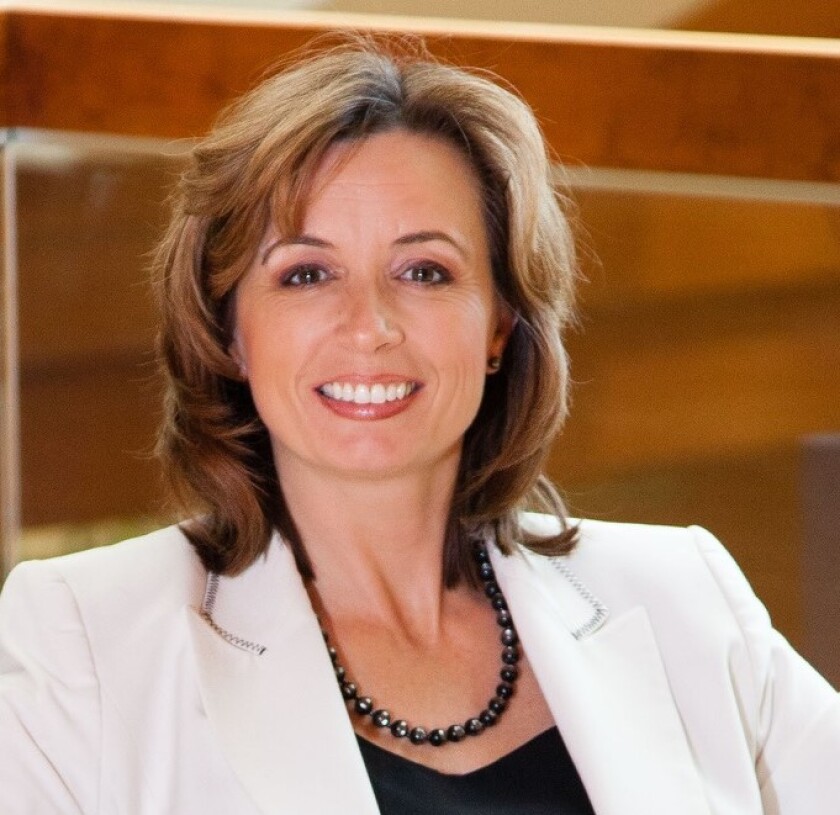
ON HER NEW ROLE
“At the Department of Technology, I have two important roles. The first is the chief of the Office of Technology Services, and second is the state chief technology officer.
“As the OTech chief, I lead a talented group of innovators and administrative team members that basically deliver, manage and secure data center and technology services to over 300 city, local and state departments. My priorities are to establish a strategy and plan for the future. I want to ensure that my operations are organized in an efficient manner to be able to provide value to our customers. And I want to make sure that I’m delivering leadership that inspires and motivates my team members to achieve their very best, and to establish controls. We need to make sure we manage what we measure, so mitigating risk, ensuring compliance and improving overall compliance — those are my operational priorities for OTech.
“When it comes to being the state chief technology officer, my role is to basically build technology bridges across the state, identifying centers of excellence. There’s great things happening at the city, local and state levels. Are there opportunities to provide shared services that benefit all? And I chair several peer advisory groups, where there are CIOs, CTOs and CISOs, so we look for opportunities to establish policy, standardization, and always remembering the goal in mind is that we want the residents of California to thank us in two, three, four years for the decisions that we make today. That’s the test.”
ON VENDOR RELATIONS
“I’m a people person, so I still look for the opportunity to be able to meet with industry leaders in person. I am looking forward to that. I’m sure the vendor community is looking forward to that. … Even in the last two months, I’ve met with numerous vendors and had the opportunity to talk about the strategy and establish the big picture. I’m here to tell vendors where we’re going, and then I rely on my team to select what technology we use in order to get there. So if I’m talking about customer relationship management software, or some type of automation in the workflow, my job is to say, ‘This is what we’re trying to achieve and this is why we’re trying to achieve it’ and set boundaries on what it is so I know we’re delivering the right thing … but then I leave it to my engineers and my experts to basically do the proof of concept, do the RFIs (requests for information) and work through those processes.”
TALKING ABOUT PRIORITIES
“In my two months in the chair, I look at people, process, technology. So when we look at prioritization in general, the Silver Tsunami is here. We’ve talked about it for a long time, you’ve written about it. Just in my network team alone, almost all of my managers are retiring by the end of the year, so succession planning, mentoring, training, making sure I’m bringing up those next level of leaders in the state, is extremely important.
“On process, I believe in reducing complexity. I look at ways to lean my process, because that speeds the delivery, so we can turn things around in weeks versus months.
“And looking at the technology, we recently established predetermined cloud terms from people that purchase from us, so we have four new offerings, and … we look for opportunities to either be the vehicle for departments to utilize us to contract with a cloud provider or, in some cases, utilize our skills to manage those services in the cloud on their behalf. Those are some opportunities that we’re looking at in the near future.”
ADVICE FOR VENDORS
“I’ve always enjoyed the private-public partnerships and relationships. I always recommend that vendors and industry leaders read (the) Vision 2023 document … understand what our priorities are for the next few years, and also understand that we’re not trying to (do everything) ... in year one. What are the priorities for years two, three, and based on those priorities, those are the things I want them to come and have those conversations with us.
“I start small — I crawl, walk and I run — so what are the things we’re looking at doing? OTech is building a three-year business plan that aligns to Vision 2023, and a technology road map that outlines how OTech will complement and support that Vision 2023. That should be published in the next few months, and that will give more insight to the vendor community on specifically the projects and technology and things that we’re looking for that will support and stand up that vision.”





